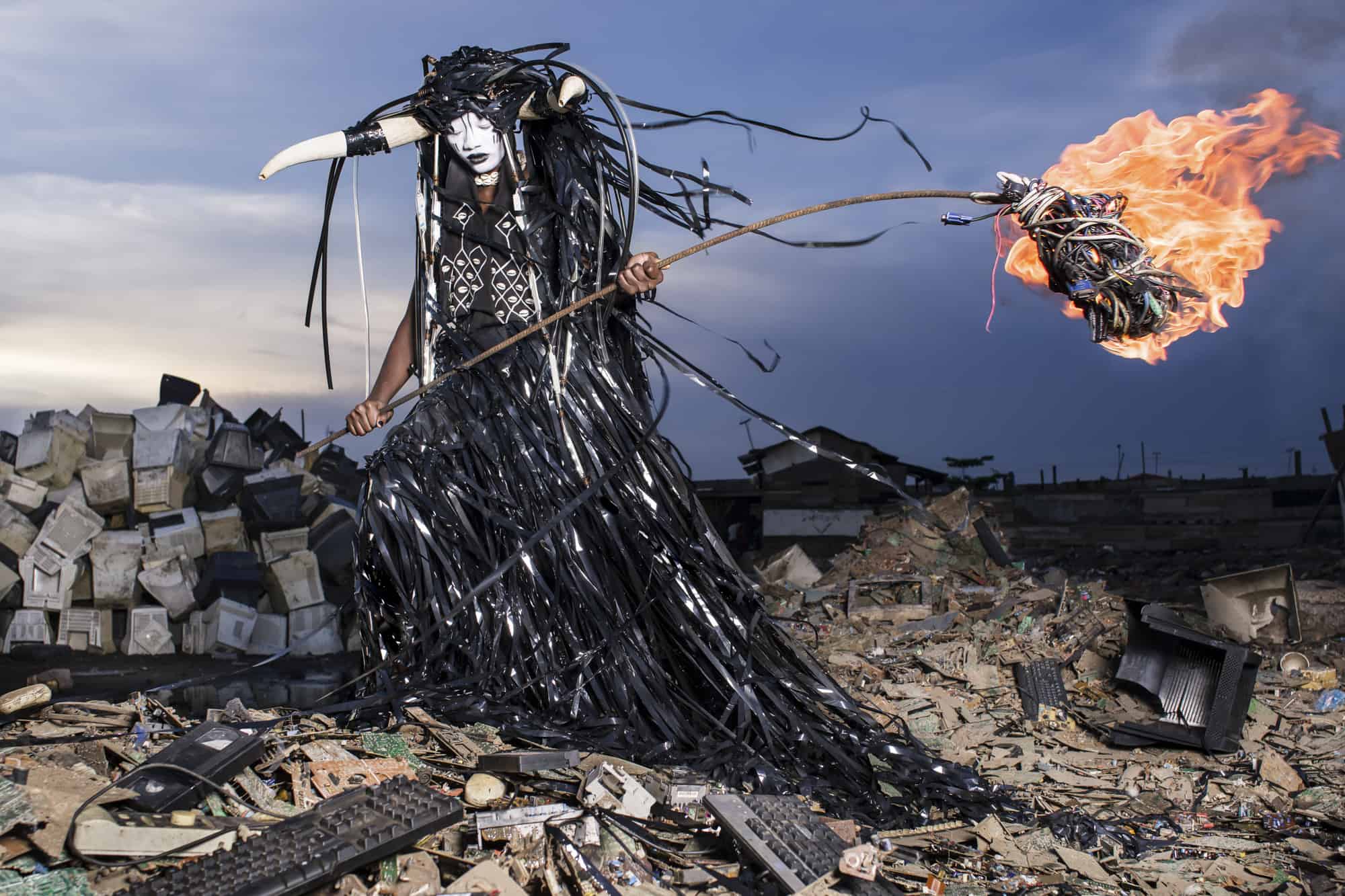The Complete Series of The Prophecy Makes U.S. Debut at the Chazen Oct. 5
Fabrice Monteiro’s photographs offer drama, awareness and warning
Madison, Wis. – Combining haute couture with full-color depictions of ecological crises, Belgian-Beninese photographer Fabrice Monteiro’s The Prophecy is a multiyear project created to raise awareness about the environment and consequences of mass consumption. The series of 13 large-scale photographs, set mostly in Africa, will be on view at the Chazen Museum of Art from Oct. 5, 2019-Jan. 5, 2020. This exhibition is the first time the entire series will be shown in the United States.
Confronted with threats of ecological destruction in Senegal, West Africa, photographer Fabrice Monteiro combined storytelling, fashion photography and photojournalism in order to highlight site-specific environmental issues within the context of West African culture and traditional beliefs. The Prophecy depicts djinns—supernatural spirits—emerging from garbage heaps, ravaged forests, motor vehicle exhaust and poisoned waters. Monteiro collaborated with Senegalese fashion designer Doulsy, who created costumes that materially signify each ecological concern. Inspired by African masquerades and evoking high fashion, the designs incorporate tar, garbage, nylon fishing nets, animal remains, firewood, rubber tires and electronic waste.
“Fabrice Monteiro’s photographs are both compelling and devastating,” said Amy Gilman, director at the Chazen Museum of Art. “They confront the viewer with the very real results of climate change, pollution and depletion of natural resources, but they do so in a way that highlights the impacts of these forces outside our American borders. We are proud to share the entire series of photographs for the first time in the United States and look forward to helping other museums bring The Prophecy to their communities.”
Fabrice Monteiro: The Prophecy is organized by Elaine Harris Productions and the Chazen Museum of Art. The exhibition is funded in part by the Andrew W. Mellon Foundation’s John E. Sawyer Seminar program, with support of the Wisconsin Arts Board with funds from the State of Wisconsin and the National Endowment for the Arts.
The Prophecy will also be part of a larger campus-wide discussion at UW–Madison. With funding from the Andrew W. Mellon Foundation, UW–Madison is hosting a John E. Sawyer Seminar, which includes public talks, roundtables, workshops and film screenings through May of 2020. The seminar explores and deepens the concept of the Plantationocene, a proposed new definition of our current epoch. The seminar interrogates the past and present of plantations, the economic, ecological and political transformations they wrought, and their significance to how we define our current historical moment.
“This exhibition is a remarkable way to reinforce the goals of the Sawyer Seminar,” said James R. Wehn, the Van Vleck curator of works on paper at the Chazen. “The figures in The Prophecy give us a way to visualize troubling realities that are nearly impossible to conceptualize from within our personal frames of reference. They show us that economic and environmental choices we’ve made here in America have consequences on landscapes and people thousands of miles away. They demand a different kind of awareness, one with a longer-term, social-minded perspective.”
ABOUT THE CHAZEN
The Chazen Museum of Art makes its home between two lakes on the beautiful campus of the University of Wisconsin–Madison. Within walking distance of the state capitol, it sits squarely in the heart of a vibrant college town. Featuring one of the best views on campus, an art-filled bridge connects the historic Elvehjem building, built in 1970, with the Chazen building, built in 2011. This connection represents both a physical and intellectual joining of human art history and the most dynamic artistic explorers of today.
With a permanent collection of more than 22,000 objects, from vessels of ancient Greece to prints by Kara Walker, the Chazen is the second largest museum in Wisconsin. Two expansive buildings encompass more than 163,000 square feet, making it the largest collecting museum in the Big Ten. More than 100,000 visitors come through the Chazen’s doors each year to enjoy the permanent collection and special exhibitions. The Chazen is the most-open museum among its peers, with open hours from 8 a.m. to 8 p.m., seven days a week. Admission is free for all visitors and includes programs for students, families and community members, all provided with the museum’s unique brand of Wisconsin hospitality.
More information, including the schedule of visiting exhibitions and events, can be found at www.chazen.wisc.edu.



